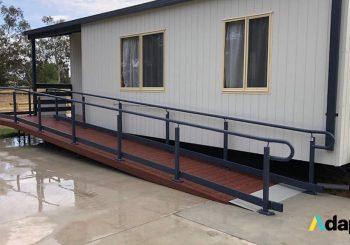Getting a wheelchair ramp installed on your residential or commercial property is a challenging project.
There are a wide variety of ramps available in the market, which makes it important to choose one that suits your specific requirements. The first thing you need to do is determine whether you require a temporary or permanent feature since your budget and the materials you’ll need will be based on its design.
Another factor that you should consider is the overall design of your ramp. Since wheelchair ramps can come in various shapes and forms, it’s quite easy to make a mistake when it comes to designing their appearance.
In this guide, we’ll discuss the different features and designs that you should definitely avoid to make the most out of your wheelchair ramp.
Mistakes to Avoid
Although it’s crucial to know precisely what you want, it’s much more important to avoid making mistakes while building your ramp. Here are a few of the most common mistakes that people tend to make while building ramps.
- A Step at the Base of the Ramp
There are instances when novice builders end up constructing a step at the bottom of the ramp. This has a significant impact on the usability of the structure. A tiny step that doesn’t affect accessibility can be installed in some instances. However, the purpose of having ramps installed is to provide users with easy access in and out of their property. A ramp step can result in these features being inaccessible to users.
- Exceedingly Narrow Ramps
The layout and the size of your ramp are entirely based on the space available on your property. Wheelchairs come in various sizes, which makes it crucial that the width of the ramp is adequate, as well. The layout of your property may require the user to make a sharp turn before reaching the next level of the ramp. The feature must meet all the specifications set by the DDA to ensure that the ramp is completely safe and the wheelchair user has sufficient mobility.
- Excessively Steep Ramps
Besides avoiding steps and narrow ramps, it is also essential to ensure that the ramp you opt for is set at a suitable angle and height from the floor or surface. While installing these disability ramps, see to it that they’re installed at the same height as the adjacent staircase. Before having the ramp fitted, make sure that the wheelchair can easily maneuver down the length of the ramp. In case it turns out to be more difficult than anticipated, there’s probably room for improvement.
Custom Built Wheelchair Ramps
Proper installation must be carried out to ensure that your disability ramp has the highest level of safety and is easily accessible. Conducting adequate research on the different kinds of ramps is the only way you will find one that suits your specific requirements. It is also essential to opt for one that’s durable and easy to maintain.
The experts at Adapta have vast knowledge in this area and can provide you with all the necessary information. Our team of skilled professionals will provide you with detailed information on the different kinds of wheelchair ramps. They can also have detailed discussions with you on the types of features you want for your accessibility ramp
Based on the information you provide, they will recommend products that suit your specific needs. Our team will make sure that the feature is designed to suit your needs and the available space. We offer a wide variety of ramp layouts and options. You can call 1800 232 782 or contact Adapta through this form, and one of our representatives will contact you shortly.


